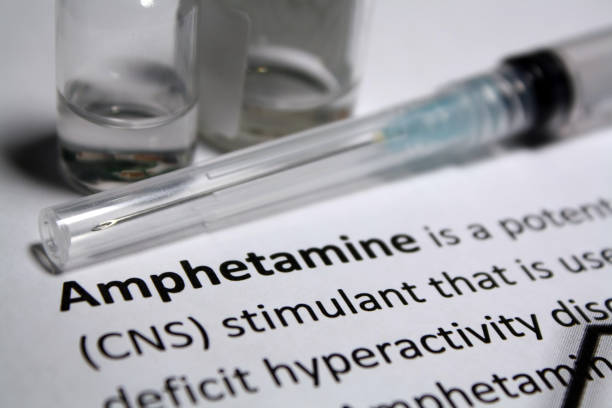What is adult attention deficit hyperactivity disorder?
Attention deficit hyperactivity disorder Adderall (ADHD) is a common psychological disorder characterized by problems with attention, impulsiveness, and hyperactivity. Adults who have severe problems with inattention, but have few or no symptoms of hyperactivity, are said to have a predominantly inattentive subtype of AD/HD.
Executive functions of the brain — such as verbal and nonverbal short-term memory, self-regulation and motivation, planning — are thought to be impaired in adults with AD/HD. Adults who have AD/HD without hyperactivity may have difficulty maintaining attention and focus, using short-term memory and recall, and regulating their emotions. Organizing and prioritizing tasks or jobs can also be challenging.
According to the diagnostic manual of the American Psychiatric Association, there are nine symptoms associated with inattention problems. Although almost everyone experiences some of these problems from time to time, people with the predominantly inattentive form of AD/HD show at least 6 out of 9 of these symptoms and have severe difficulties in their daily lives due to them themselves. These symptoms can cause alterations or disruptions in school, work, family, or social activities.
Here is the list of the nine symptoms associated with the predominantly inattentive form of AD/HD:
- Often has difficulty sustaining attention at work or play.
- Often doesn’t pay enough attention to details or makes careless mistakes at work, school, or other tasks.
- Often has trouble organizing tasks or activities.
- They are easily distracted by external stimuli.
- Often fails to finish things when instructed or fail to complete schoolwork, chores, or other activities, even when they understand what is expected of them.
- Often becomes forgetful when doing routine tasks.
- Frequently postpones or avoids tasks that require continuous attention.
- Often loses materials needed to complete tasks and activities.
- He doesn’t seem to listen even when you talk to him directly.
Adults who have severe or chronic problems due to having six or more of these symptoms and no symptoms of hyperactivity or impulsivity may have AD/HD without the hyperactivity. Other psychological conditions, such as depression or anxiety, can also accompany this predominantly inattentive form of AD/HD.
What causes AD/HD without hyperactivity in adults?
No one is sure exactly what causes AD/HD without hyperactivity, but the condition usually runs in families. There appears to be a genetic and neurobiological basis for attention deficit disorder. Usually, adults with predominantly inattentive AD/HD first developed it during childhood. However, because children with AD/HD are generally not hyperactive, the disorder may not be recognized until they reach adolescence or adulthood. This is especially true of girls and women with AD/HD without hyperactivity. Girls may be more quiet and passive than those without the disorder. Women are often not diagnosed until one of their children is diagnosed with AD/HD.
Researchers are studying nutritional, environmental, and other factors that may play a role in AD/HD.
How is attention deficit disorder without hyperactivity diagnosed in adults?
There is no single medical or genetic test for this form of AD/HD. A qualified mental health professional, such as a medical doctor or clinical psychologist, must evaluate the person to make a diagnosis.
- Your doctor or another mental health professional will do a diagnostic interview to get a detailed history of your past and present behavior patterns. The discussion will include questions about how you function at home, work, and school. They may also interview your closest family members and close friends to verify the information and provide more details.
- They’ll ask about your family medical history and may need to do a physical exam to rule out any medical conditions that may cause symptoms that resemble ADHD.
- You may be asked to fill in a list of symptoms. The psychologist or doctor may use other behavior rating scales.
- Another psychological testing may be done to rule out conditions that may coexist, such as anxiety or depression.
To be diagnosed with AD/HD, you must be experiencing a significant disability in at least two critical areas of your life (work, school, or home). Some examples are severe problems like job loss due to inattentive symptoms, excessive conflict in relationships or divorce, financial problems caused by a poor organization or not paying bills on time, or being placed on academic suspension.
Some medical conditions, such as seizures or thyroid problems, can cause AD/HD-like symptoms. That is why it is necessary to have a physical exam to rule out other medical causes.
How is AD/HD without hyperactivity treated in adults?
Although there is no cure for this disorder, it can be successfully treated. There are several different strategies for treating adults, but it is usually some combination of medication and behavioral therapy that works best.
- Medications – Prescription medications used to treat AD/HD in children usually work well for most adults with the inattentive form of AD/HD. However, the dosage and frequency of medications must be adjusted. It is essential to match the person’s needs with AD/HD with the characteristics of the medicine. The most common prescription drugs prescribed for AD/HD are psychostimulants, antidepressants, and non-stimulant medications. The drugs affect the neurotransmitters that send signals to brain cells.
- Psychostimulants: These are the preferred medications to treat AD/HD. The two types used most often are amphetamines and methylphenidate. The mixture of amphetamine salts is marketed under the Adderall® brand. Methylphenidate is sold under the brand names Ritalin®, Concerta®, or Metadate®. Immediate-acting/release, sustained-acting/release, and extended-acting/release forms of Adderall and Ritalin are available. The dose and frequency of these medications may need to be adjusted to maximize their effectiveness. In some instances, psychostimulants are not effective, or the person has coexisting psychological disorders, then other medications will be prescribed.
- Non-stimulants – These medications may be needed in cases where the patient does not respond to stimulants or has an adverse reaction to them. They can also be used for people who also suffer from psychiatric illnesses. The US Food and Drug Administration approved the first drug to treat AD/HD in adults was Atomoxitin (Strattera®).
- Antidepressants: Medications such as tricyclic antidepressants, monoamine oxidase inhibitors, bupropion (Wellbutrin®), and venlafaxine (Effexor®) increase norepinephrine levels in the brain and have positive effects on ADHD symptoms. Although they are used, these drugs are not approved by the Food and Drug Administration (FDA).




